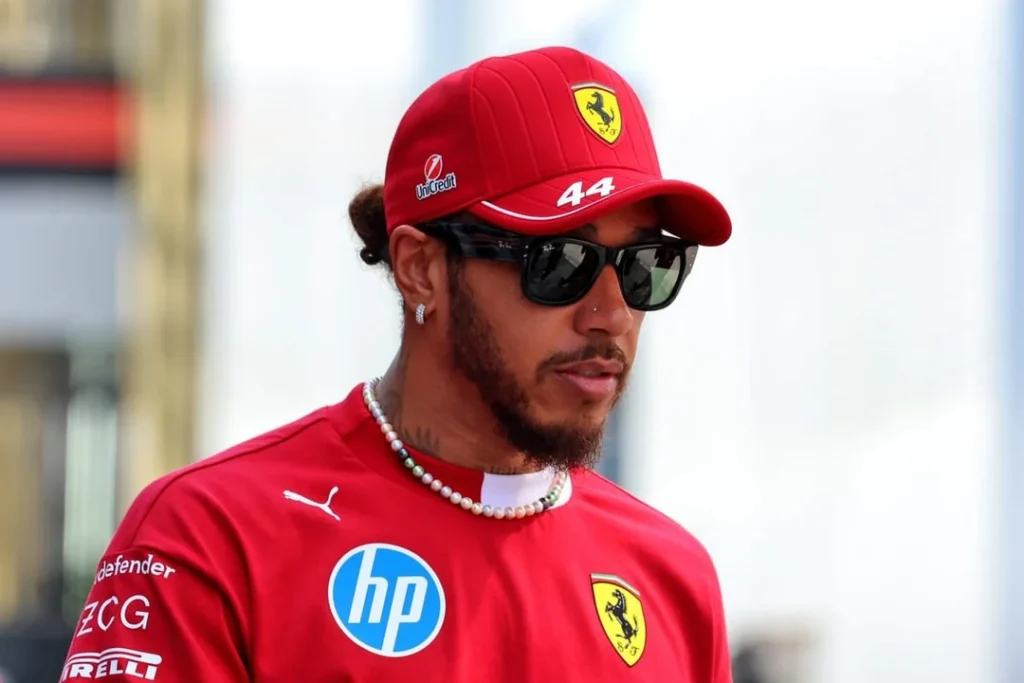
Lewis Hamilton’s arrival at Ferrari was meant to usher in a new era, both for himself and for the Scuderia. Yet, just a few races into the 2025 season, Hamilton is facing a tougher transition than many expected. The Saudi Arabian Grand Prix in Jeddah starkly illustrated the growing pains: Hamilton finished over 30 seconds behind his teammate Charles Leclerc, prompting concern across the paddock and confusion even from Lewis himself.
“Are the others struggling?” Hamilton asked over team radio as he drifted further from the sharp end of the field. His bewilderment captured what many observers have been sensing, something isn’t clicking yet.
The Jeddah Gap: What Happened?
In Jeddah, Charles Leclerc was competitive throughout, securing a podium and matching the pace of Red Bull and McLaren for much of the weekend. Hamilton, by contrast, languished in the midfield. According to analysis from The Race and RaceFans, one major factor was Hamilton’s inability to extract peak performance from the Ferrari SF-25’s unique setup demands.
The SF-25 is extremely sensitive to setup nuances and demands pinpoint tire management and driving style adaptation. Leclerc, who has spent years acclimating to Ferrari’s evolving car philosophies, is naturally able to extract more from it. Hamilton, fresh from over a decade of Mercedes machinery, is still recalibrating his instincts and approach.
In effect, Hamilton is “fighting” the car rather than “dancing” with it, a phenomenon visible in his inconsistent grip levels and balance through corners. This critical lack of flow was visible across qualifying and race stints, contributing to his rapid fall away from the leaders.
The Confidence Spiral
Beyond the technical mismatch, there’s a growing psychological dimension to Hamilton’s struggles. As detailed by Mark Hughes, a string of underwhelming performances can quickly erode even the strongest driver’s confidence.
Hamilton appears to be second-guessing his inputs (braking points, steering angles, tire preparation), leading to a visible overthinking on track. Instead of driving instinctively, Hamilton is caught in a cycle of micro-adjustments that sap performance lap after lap.
The effects were obvious in Jeddah: slower tire warm-up, cautious mid-corner commitment, and an inability to attack traffic aggressively. Even Hamilton admitted post-race that he didn’t fully understand why he was unable to match the pace of Leclerc or the front-runners.
Vasseur’s Vote of Confidence
Despite the early season struggles, Ferrari Team Principal Fred Vasseur remains fully supportive. Speaking to Formula1.com, Vasseur emphasized that the team is “2000%” behind Hamilton, highlighting that the challenges are about adaptation and not a lack of underlying speed.
Internally, Ferrari believes that once Hamilton acclimates to the SF-25’s demands and regains confidence in its behavior, the results will follow. They view his struggles as an inevitable teething phase rather than a worrying long-term trend.
This sentiment is echoed among some observers as well, who point out that Hamilton has historically adapted across different eras and machinery with success. The belief remains that he will do so again.
A Timeline for Recovery?
Hamilton’s adaptability has been a hallmark of his career, whether during regulation changes, team switches, or evolving tire philosophies. However, the 2025 grid presents perhaps his toughest test yet.
The midfield is more competitive than ever, with Red Bull, McLaren, and Aston Martin operating at a high level. Every race spent “learning” rather than “competing” risks putting Hamilton and Ferrari further behind in the championship fight.
Time, patience, and a few key breakthroughs in car setup and tire usage may be all that stands between Hamilton’s rocky start and a competitive rebound.
As some have put it: mastering the SF-25 is like learning a new instrument, in the middle of a live performance. Hamilton’s ability to recover isn’t in question. The only uncertainty is whether he will do it quickly enough to make a real impact in 2025.
Final Thoughts
Hamilton’s struggles aren’t terminal, they’re transitional. The combination of a new team, a sensitive car, and intense external expectations have all created a perfect storm. Yet Ferrari believes in him, and history suggests Hamilton still has the ability to turn things around.
As Fred Vasseur put it, “The potential is there.” Now it’s just a matter of unlocking it, before the season races too far ahead.
